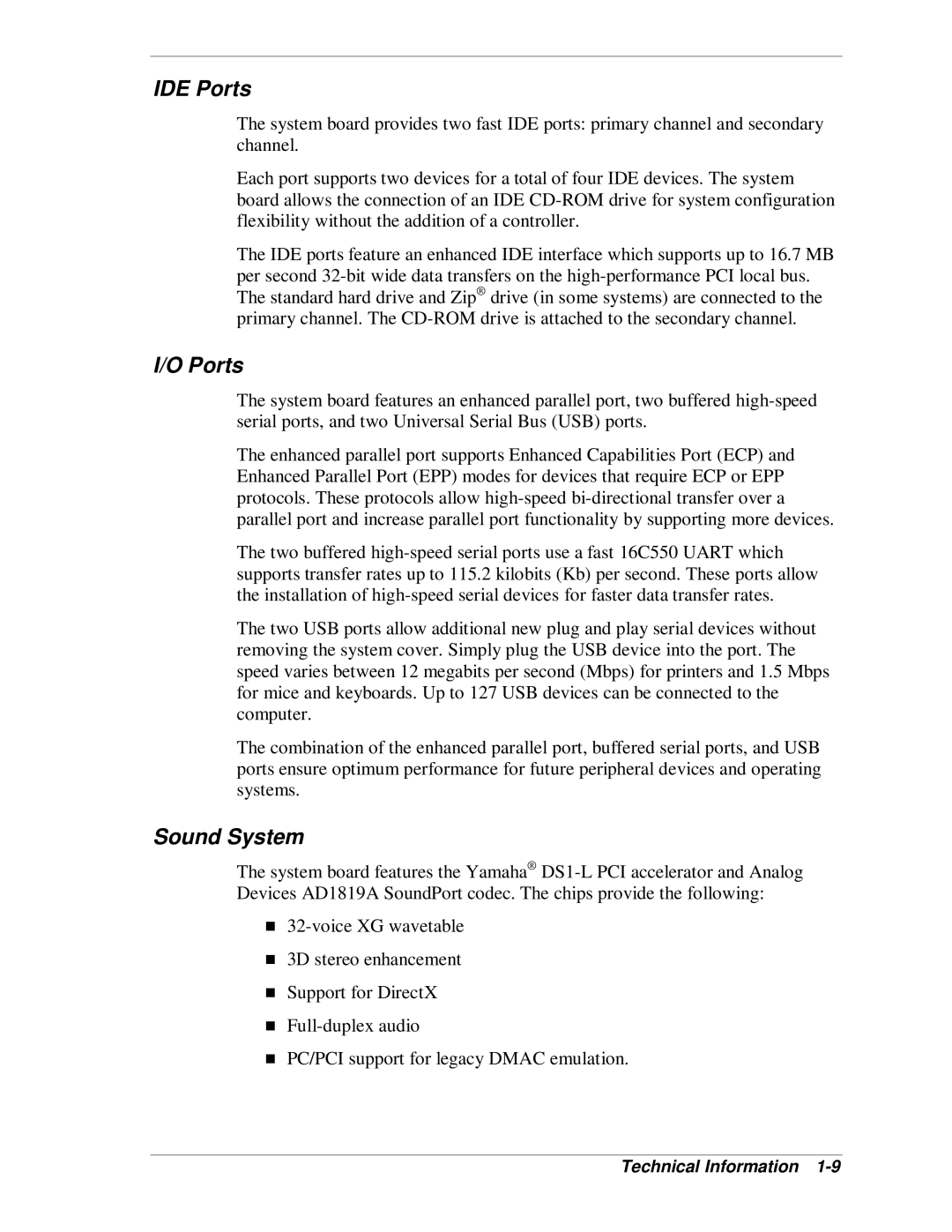
IDE Ports
The system board provides two fast IDE ports: primary channel and secondary channel.
Each port supports two devices for a total of four IDE devices. The system board allows the connection of an IDE
The IDE ports feature an enhanced IDE interface which supports up to 16.7 MB per second
I/O Ports
The system board features an enhanced parallel port, two buffered
The enhanced parallel port supports Enhanced Capabilities Port (ECP) and Enhanced Parallel Port (EPP) modes for devices that require ECP or EPP protocols. These protocols allow
The two buffered
The two USB ports allow additional new plug and play serial devices without removing the system cover. Simply plug the USB device into the port. The speed varies between 12 megabits per second (Mbps) for printers and 1.5 Mbps for mice and keyboards. Up to 127 USB devices can be connected to the computer.
The combination of the enhanced parallel port, buffered serial ports, and USB ports ensure optimum performance for future peripheral devices and operating systems.
Sound System
The system board features the Yamaha®
3D stereo enhancement
Support for DirectX
T
PC/PCI support for legacy DMAC emulation.
